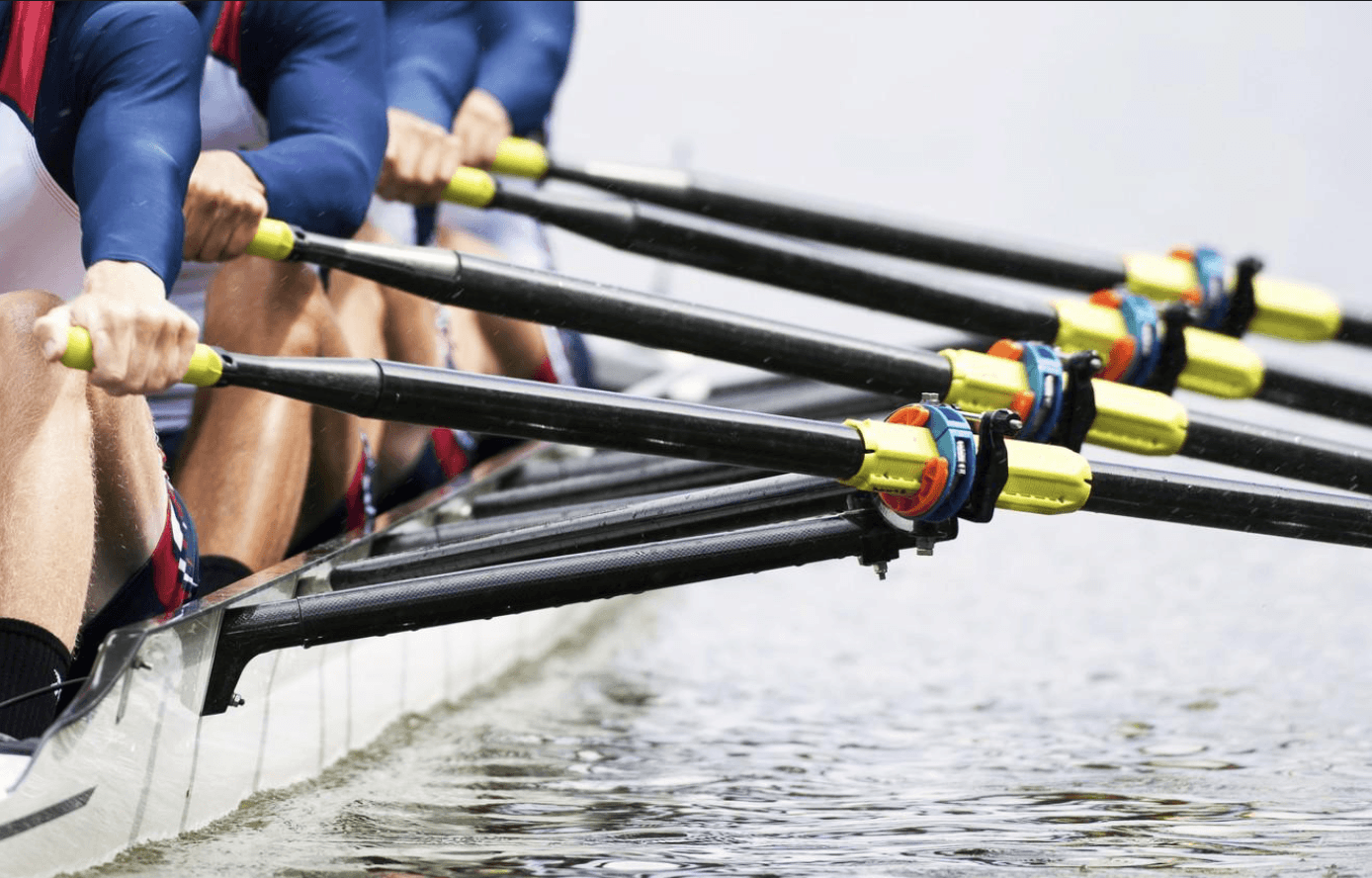
Jul 17, 2024
A Comprehensive Guide to Rowing Equipment and Materials
A Comprehensive Guide to Rowing Equipment and Materials
A Comprehensive Guide to Rowing Equipment and Materials
Rowing is a sport that demands not only physical strength and technique but also specialized equipment designed for performance and durability. At the heart of the sport is the **rowing shell**, or boat, which has evolved over centuries. Early shells were made of wood, but modern racing shells are constructed primarily from **carbon fiber**, a material known for its lightweight and strength. Carbon fiber boats allow rowers to move swiftly through the water with minimal drag and maximum energy efficiency. Some shells may also use **fiberglass** or **Kevlar**, offering durability at a slightly lower cost, though they are typically heavier than their carbon counterparts. These advancements in materials have made rowing shells faster, more durable, and easier to handle.
The **oars** used in rowing have also seen significant advancements in materials. Modern oars are predominantly made from carbon fiber, providing rowers with a lightweight and strong tool for generating power and speed. In earlier times, **wooden oars** were the standard, but they have mostly been replaced due to the advantages that carbon fiber offers in terms of performance. Oars come in various blade shapes, with the **hatchet blade** design offering rowers more surface area to grip the water, resulting in a more powerful stroke.
Another critical component of the rowing setup is the **sliding seat**. This innovation allows rowers to use not just their arms and back but also their legs, generating more power with each stroke. These seats are typically made from molded plastic or carbon fiber, while the slides are constructed from stainless steel or aluminum for smooth movement and minimal friction. Together with the **foot stretcher**, which stabilizes the rower and provides a solid base for pushing off, these components ensure maximum efficiency during rowing.
The **rigging** on the boat, which holds the oars in place, is another essential feature. Made from strong materials like aluminum or stainless steel, rigging ensures that the oars are positioned at the correct angle and height relative to the water. Proper rigging is key to achieving optimal rowing technique and minimizing strain on the rower’s body.
Finally, rowing gear such as **clothing** and accessories, including form-fitting suits made from quick-drying synthetic materials, enhance both comfort and performance. Specialized shoes attached to the foot stretcher provide stability and grip, while weather-resistant outerwear ensures rowers can perform in various conditions. Overall, the materials and technology used in rowing equipment have significantly advanced, contributing to the high-speed, high-performance nature of the modern sport.
Rowing is a sport that demands not only physical strength and technique but also specialized equipment designed for performance and durability. At the heart of the sport is the **rowing shell**, or boat, which has evolved over centuries. Early shells were made of wood, but modern racing shells are constructed primarily from **carbon fiber**, a material known for its lightweight and strength. Carbon fiber boats allow rowers to move swiftly through the water with minimal drag and maximum energy efficiency. Some shells may also use **fiberglass** or **Kevlar**, offering durability at a slightly lower cost, though they are typically heavier than their carbon counterparts. These advancements in materials have made rowing shells faster, more durable, and easier to handle.
The **oars** used in rowing have also seen significant advancements in materials. Modern oars are predominantly made from carbon fiber, providing rowers with a lightweight and strong tool for generating power and speed. In earlier times, **wooden oars** were the standard, but they have mostly been replaced due to the advantages that carbon fiber offers in terms of performance. Oars come in various blade shapes, with the **hatchet blade** design offering rowers more surface area to grip the water, resulting in a more powerful stroke.
Another critical component of the rowing setup is the **sliding seat**. This innovation allows rowers to use not just their arms and back but also their legs, generating more power with each stroke. These seats are typically made from molded plastic or carbon fiber, while the slides are constructed from stainless steel or aluminum for smooth movement and minimal friction. Together with the **foot stretcher**, which stabilizes the rower and provides a solid base for pushing off, these components ensure maximum efficiency during rowing.
The **rigging** on the boat, which holds the oars in place, is another essential feature. Made from strong materials like aluminum or stainless steel, rigging ensures that the oars are positioned at the correct angle and height relative to the water. Proper rigging is key to achieving optimal rowing technique and minimizing strain on the rower’s body.
Finally, rowing gear such as **clothing** and accessories, including form-fitting suits made from quick-drying synthetic materials, enhance both comfort and performance. Specialized shoes attached to the foot stretcher provide stability and grip, while weather-resistant outerwear ensures rowers can perform in various conditions. Overall, the materials and technology used in rowing equipment have significantly advanced, contributing to the high-speed, high-performance nature of the modern sport.
Rowing is a sport that demands not only physical strength and technique but also specialized equipment designed for performance and durability. At the heart of the sport is the **rowing shell**, or boat, which has evolved over centuries. Early shells were made of wood, but modern racing shells are constructed primarily from **carbon fiber**, a material known for its lightweight and strength. Carbon fiber boats allow rowers to move swiftly through the water with minimal drag and maximum energy efficiency. Some shells may also use **fiberglass** or **Kevlar**, offering durability at a slightly lower cost, though they are typically heavier than their carbon counterparts. These advancements in materials have made rowing shells faster, more durable, and easier to handle.
The **oars** used in rowing have also seen significant advancements in materials. Modern oars are predominantly made from carbon fiber, providing rowers with a lightweight and strong tool for generating power and speed. In earlier times, **wooden oars** were the standard, but they have mostly been replaced due to the advantages that carbon fiber offers in terms of performance. Oars come in various blade shapes, with the **hatchet blade** design offering rowers more surface area to grip the water, resulting in a more powerful stroke.
Another critical component of the rowing setup is the **sliding seat**. This innovation allows rowers to use not just their arms and back but also their legs, generating more power with each stroke. These seats are typically made from molded plastic or carbon fiber, while the slides are constructed from stainless steel or aluminum for smooth movement and minimal friction. Together with the **foot stretcher**, which stabilizes the rower and provides a solid base for pushing off, these components ensure maximum efficiency during rowing.
The **rigging** on the boat, which holds the oars in place, is another essential feature. Made from strong materials like aluminum or stainless steel, rigging ensures that the oars are positioned at the correct angle and height relative to the water. Proper rigging is key to achieving optimal rowing technique and minimizing strain on the rower’s body.
Finally, rowing gear such as **clothing** and accessories, including form-fitting suits made from quick-drying synthetic materials, enhance both comfort and performance. Specialized shoes attached to the foot stretcher provide stability and grip, while weather-resistant outerwear ensures rowers can perform in various conditions. Overall, the materials and technology used in rowing equipment have significantly advanced, contributing to the high-speed, high-performance nature of the modern sport.
Our latest stories:
Our latest stories:


Jul 17, 2024
A Comprehensive Guide to Rowing Equipment and Materials
A Comprehensive Guide to Rowing Equipment and Materials
A Comprehensive Guide to Rowing Equipment and Materials


Aug 15, 2023
Globalization of Rowing: The Evolution and Worldwide Expansion of the Sport
Globalization of Rowing: The Evolution and Worldwide Expansion of the Sport
Globalization of Rowing: The Evolution and Worldwide Expansion of the Sport


Dec 21, 1999
The Future of Rowing: Innovation, Expansion, and Growth
The Future of Rowing: Innovation, Expansion, and Growth
The Future of Rowing: Innovation, Expansion, and Growth
See all posts


